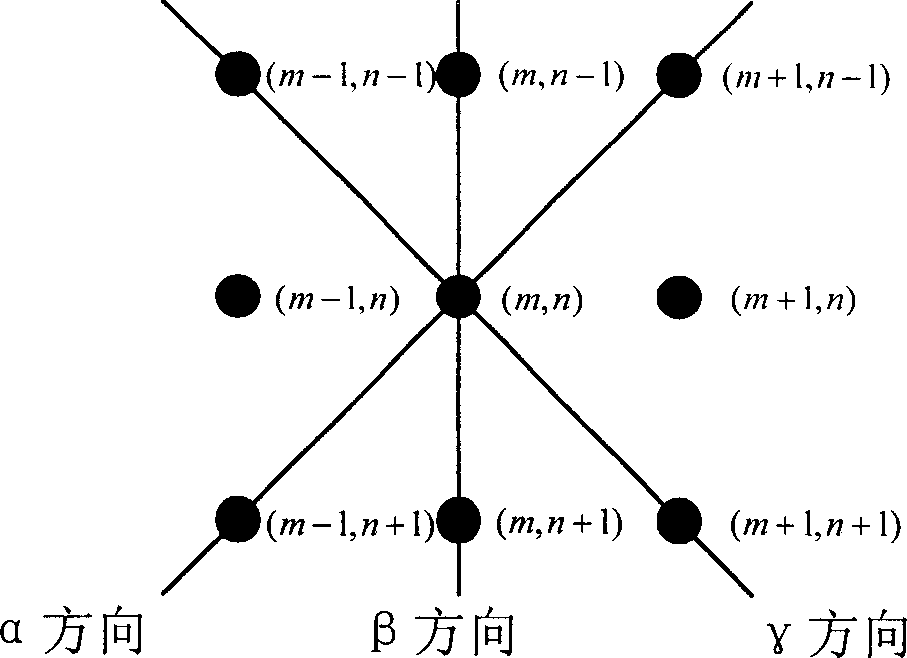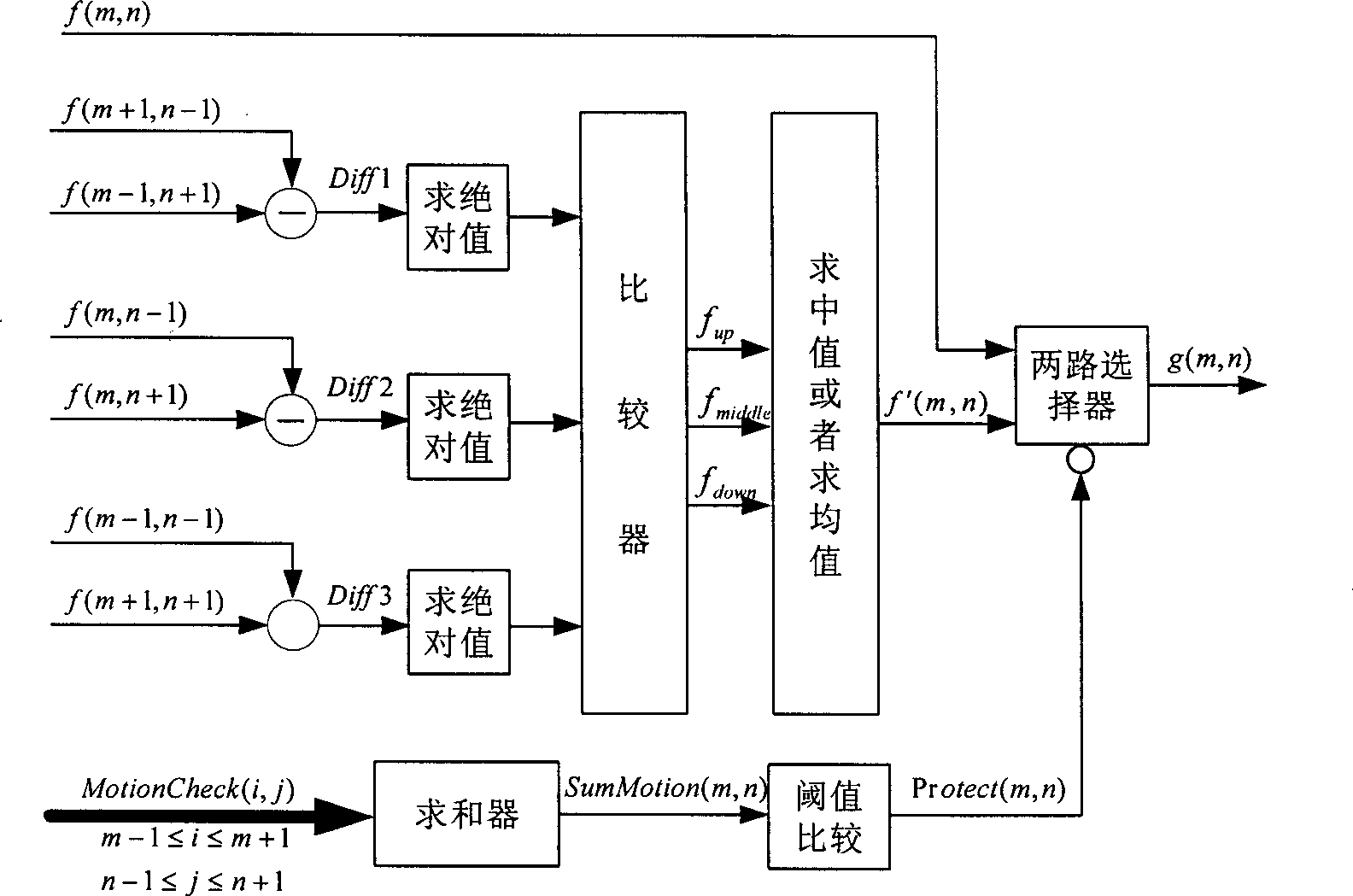Adaptive compensation algorithm for digitalization processing of progressive scanned TV signal
An adaptive compensation, TV signal technology, applied in the field of TV scan format conversion and computing video, which can solve the problems of static object distortion, jaggedness, blurring of moving objects and stationary objects, etc.
- Summary
- Abstract
- Description
- Claims
- Application Information
AI Technical Summary
Problems solved by technology
Method used
Image
Examples
Embodiment Construction
[0019] The present invention will be further described in detail below in conjunction with the accompanying drawings and specific implementation examples.
[0020] Adaptive compensation algorithm for digitally processing progressive scan TV signals, including motion and stillness detection algorithm, motion compensation algorithm, fringe field protection algorithm. The purpose of the motion and stillness detection algorithm is to distinguish the moving object from the still object in the TV signal; the motion compensation algorithm is to effectively compensate the moving object in the TV signal, so that the subjective effect of the compensated image is greatly improved; The fringe field protection algorithm is to compensate for the compensation distortion generated at the junction of the moving part and the edge of the static part. In the realization of the algorithm, the present invention fully considers the realization factors of the hardware. The operations in the algorith...
PUM
 Login to View More
Login to View More Abstract
Description
Claims
Application Information
 Login to View More
Login to View More - R&D
- Intellectual Property
- Life Sciences
- Materials
- Tech Scout
- Unparalleled Data Quality
- Higher Quality Content
- 60% Fewer Hallucinations
Browse by: Latest US Patents, China's latest patents, Technical Efficacy Thesaurus, Application Domain, Technology Topic, Popular Technical Reports.
© 2025 PatSnap. All rights reserved.Legal|Privacy policy|Modern Slavery Act Transparency Statement|Sitemap|About US| Contact US: help@patsnap.com


